With over 200K daily commuters and a daily footfall of 400K BKC has established itself as the emerging CBD in Mumbai. With a commercial footprint of >15 Mn SFT, BKC houses the HQs of large corporations, including Bank of America, ICICI Bank, JP Morgan, BDB, etc.
Beyond business, the recent emergence of NMACC, Jio World Drive, Jio Gardens and the Jio Convention Center have transformed BKC from simply a commercial district to a center for arts, entertainment and luxury retail.
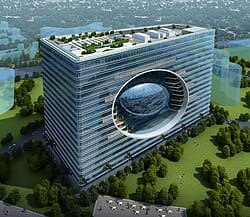
However, BKC has a severe traffic and congestion problem. With 20,000+ cars entering daily (we counted!), BKC is one of the slowest moving parts of the city, with peak time speeds dropping to below 7 Km / hr - speeds at which walking is faster. To add to this - as high as 60% of cars entering BKC are at single occupancy - contributing greatly to the traffic problem.
Less than 10% of all commuters use cars - this enough to bring BKC to a standstill.
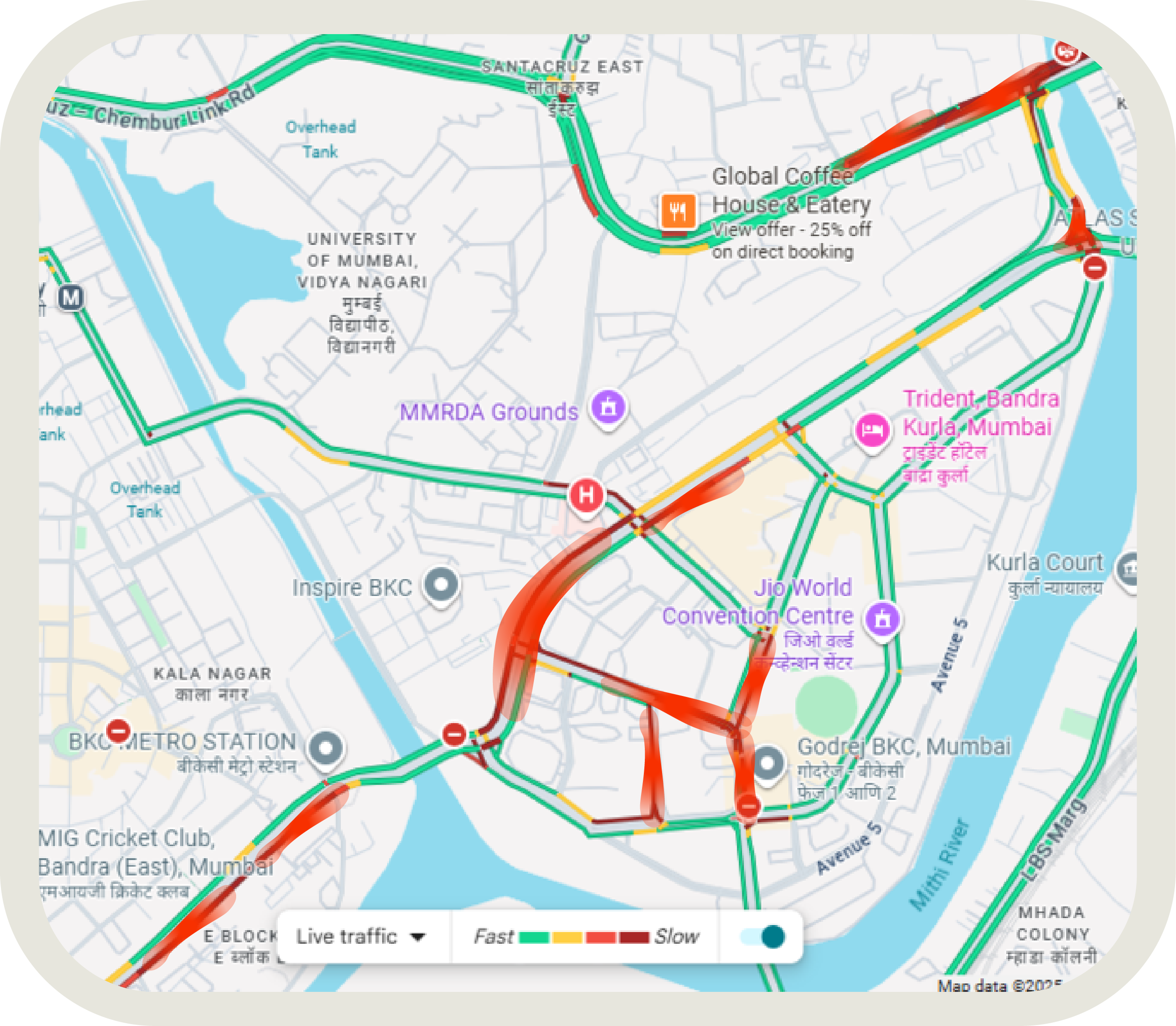
How did it get this way?
We all know that only viable alternatives to driving can bring down traffic and congestion. Without an alternative, people will choose to drive over using public transport and other high capacity vehicles.
So let us see what BKC offers to commuters as an alternative to driving:
Mumbai Public transport’s new crown jewel, the Aqua line has a station at BKC, connecting it to Aarey JVLR in the North and Cuffe Parade in the South. As Mumbai's first fully underground corridor, it offers seamless, air-conditioned travel with a high average running speed of approximately 34 kmph. Despite this, BKC metro station falls short in one key aspect: first and last mile connectivity, making it an incomplete solution. Here’s what we mean:
The station is located in the F Block, rather than the G Block - which houses most of BKC largest commercial buildings (The Capital, One BKC, Godrej BKC, etc.) and offices (ICICI Bank, Bank of America, BDB, etc.). Some parts of G block are more than 2 kms away from the metro station, making walking impractical. The narrow and fragmented footpaths further disrupt the walkability around the station.
It takes longer than 15 minutes to find an auto at peak times and costs more than ₹90 to get there (₹50 by share auto). In the worst case, the office to metro station commute can take as long as 30 minutes and cost as much as ₹150. This gap in last mile connectivity undermines the usefulness of the metro
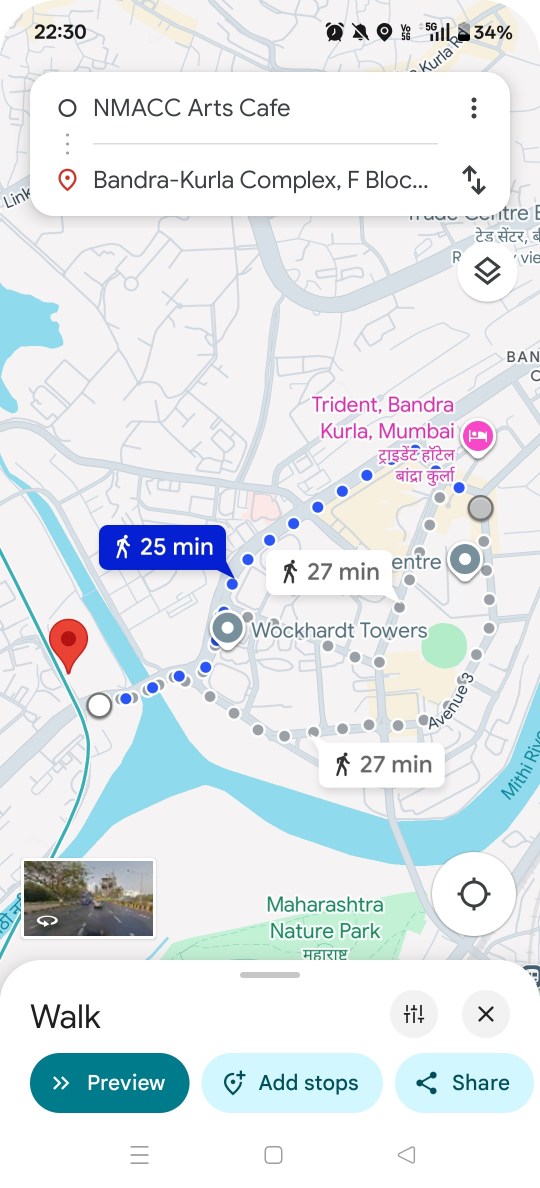
Meanwhile, Mumbai’s lifeline, the suburban rail carries >70 lakh passengers daily. BKC does have connectivity to both Bandra and Kurla stations, located at the western and eastern ends of BKC respectively. However, they are plagued by the same last mile connectivity problems that the Metro station faces, compounded further by their distance from BKC’s core. Autos cost more and take significantly longer to get to Bandra and Kurla stations. The trains themselves are mostly non-AC and packed beyond their capacity. Ultimately, the suburban rail - despite its vital role - falls short of delivering a seamless, comfortable commute experience to BKC.

Our vision for ‘New BKC’
Cityflo envisions a transformed BKC commute where every option - Car, Bus, Train, or Metro - is convenient, comfortable, affordable, and quick for commuters.
Our vision is a BKC where:
- Commuters secure a quick, comfortable, affordable and reliable ride from their office to the nearest transit station
- High-capacity commuter buses replace single-occupancy vehicles, offering door-to-door transport that rivals the comfort of a car
- The reliance on private vehicles is eliminated, making the commute to and from the workplace efficient and effortless
The result is significantly reduced congestion, lower carbon emissions, and less time spent getting to and from work - so that the 8-hour workday doesn’t become a 12-hour one.
This is not a dream, but a reality that we at Cityflo are working to achieve.
What have we done so far to solve this?
At Cityflo, we have experience solving the commute for over 1,500 BKC goers daily. Over 80% of our BKC passengers are car owners, but today, they prefer our buses to take them to office and bring them home.
Through our services, we have been able to take >1,200 cars out of BKC. Buses save 75% of space compared to single occupancy cars and have 86% fewer carbon emissions. Our BKC routes free up approximately 3.5 Km of road space and reduce CO2 emissions by about 7.5 tons every day.
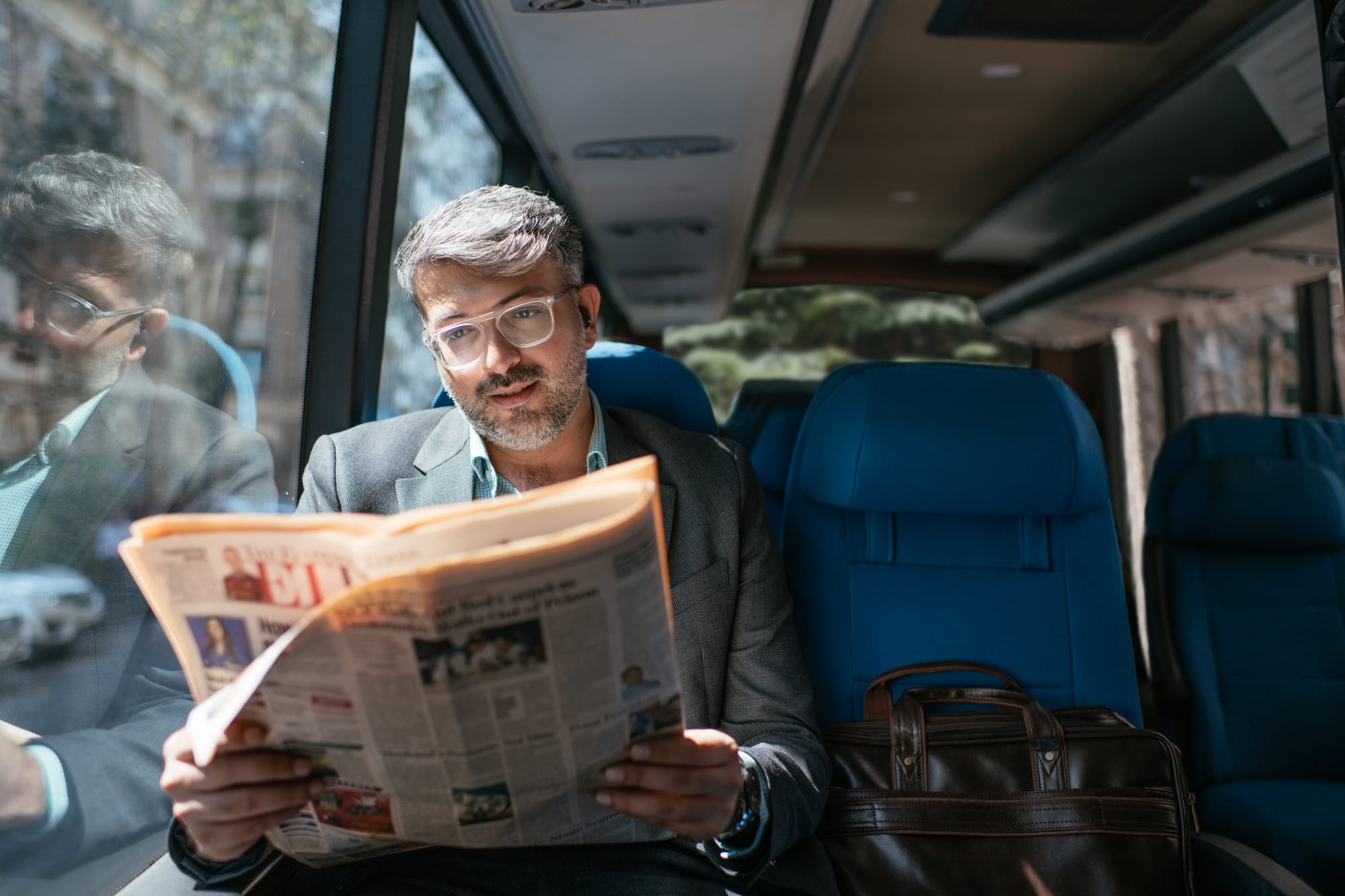
Since October 2025, we have also started feeder buses that serve the BKC metro. These feeders provide first and last mile connectivity to commuters looking to ride the BKC metro.
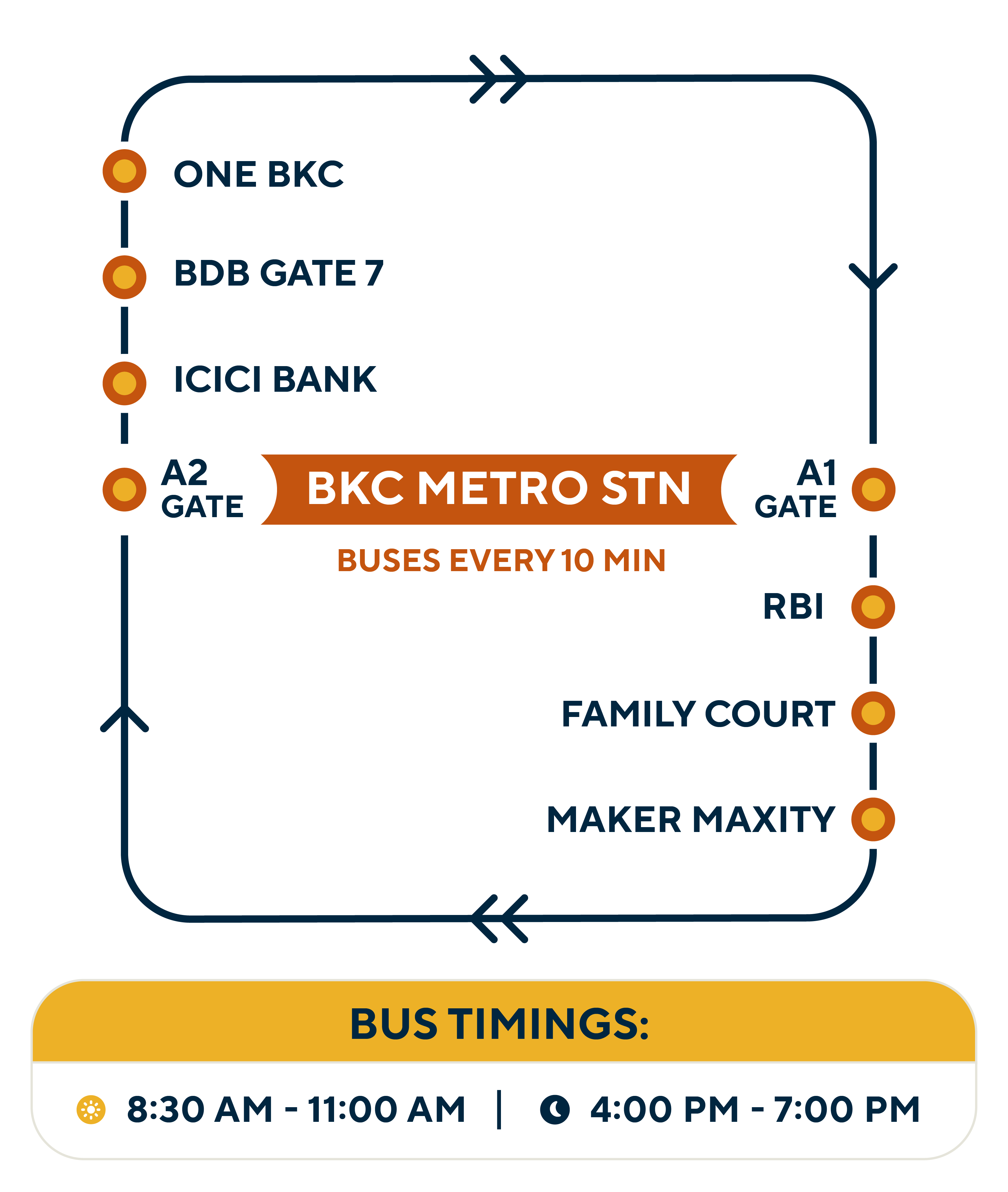
However, we have only scratched the surface with BKC so far.
What we think the solution looks like:
We at Cityflo believe that BKC already has the infrastructure needed to deliver their 2 Lakh daily commuters a comfortable and seamless journey. With its wide 6+ lane roads and dense office buildings, BKC is ideally suited for a Bus Revolution - and all it would take is 260 buses and some determination to make a change. Here’s how:
250 Commuter buses
Currently, Cityflo runs 60+ buses to BKC every day. However, we believe the potential here is to run >250 buses from across the city to BKC. Each of our buses takes about 20 cars out of the road. With 250 buses, we can reduce the number of vehicles entering BKC by about 25% or 5,000 cars.
Here is our understanding of the demand in Mumbai and visions for what the future routes would look like
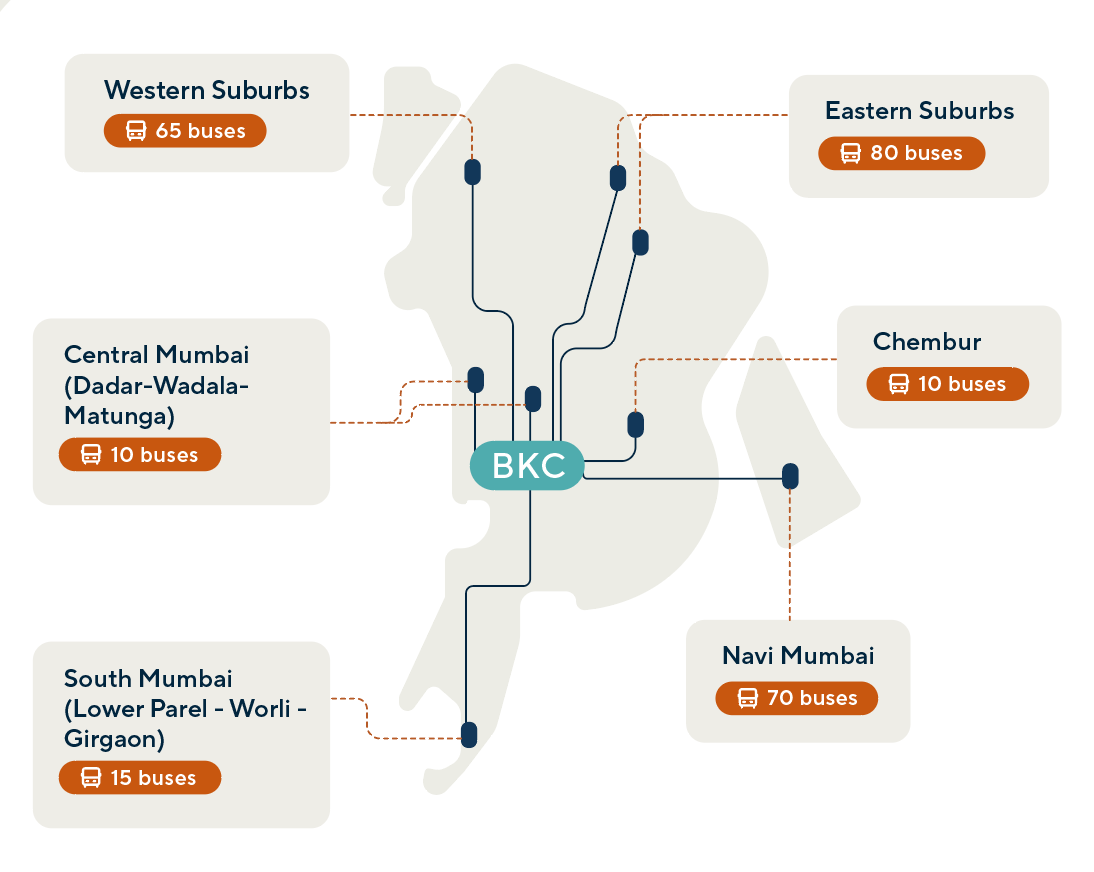
10 dedicated feeder loop buses for the BKC Metro
The metro has a frequency of 8 minutes and a carrying capacity of 5,000 passengers. However the feeder loops run at a frequency of only about 20 minutes, with a capacity of 35 passengers. Hence, while useful, the feeder needs to scale significantly to be a viable option for commuters.
Having just 10 dedicated buses running feeder routes to the metro could increase the frequency to 4 minutes. This would significantly reduce the wait time for riders and ensure that the feeders are an attractive alternative to driving.
Parking and Congestion reform
With rents rising up to 3,500+ per SFT per year, BKC commands some of the highest rents in the country, a stark contrast to the parking prices that remain significantly undervalued. This disparity is driven by a system where both the MMRDA and some corporates actively subsidize parking for car commuters, unknowingly encouraging single-occupancy vehicle use.
About 60% of all car commuters to BKC travel in single occupancy vehicles. A single person traveling in a car takes 4X more space and emits 7X* more CO2 than a bus commuter. Despite this, a car and a bus user pays the same amount to enter BKC - nothing.
*Without taking into account the fuel saved by travel time reduction achieved with fewer cars on the street
Congestion pricing can solve this problem and ensure commuters pay fair prices for the road and parking services that they use - but can only be implemented once public transport infrastructure is in place.
Section 6: What can you do to make this possible?
Corporates:
- Bulk purchase metro passes and feeder loop passes for employees - Subsidize their metro + bus travel @ ₹100 / day
- Subsidize travel for employees by paying per seat for our commuter buses for door to door travel - Starting @ ₹99 / ride
- ‘Adopt’ a bus for BKC - help us build a more robust fleet to serve the area better - invest ~₹100 per employee per day for and ‘adopt’ a bus for BKC, allowing us to increase feeder frequency to 4 minutes
- Consider having staggered work times for employees to reduce the peak time traffic
Commuters:
- Consider using public transport - take advantage of the new metro line and the feeder loops at BKC
- Consider using commuter buses over single occupancy vehicles - here are the Cityflo routes serving your area
- Consider car pooling to reduce emissions
MMDRA:
- Implement congestion fees for single occupancy vehicles in BKC - to encourage commuter buses and car pooling
- Raise parking prices to reflect the actual cost to provide it
- Provide dedicated right of way for high capacity vehicles like Buses and Public transport vehicles to help them reach their destination faster
- Push to improve pedestrian infrastructure leading and from the metro station